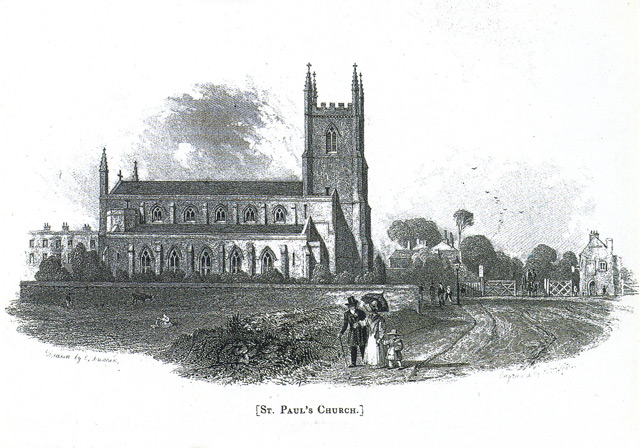Site History
Previous page | Next page

In 1824 the government received a windfall when Austria unexpectedly repaid a war loan of £2 million. From this sum £500,000 was voted to be added to the funds of the Church Building Society. The Society became the Incorporated Church Building Society by an act of parliament in 1826. The Commissioners were also empowered to raise further sums by accumulating common interest and loan interest on the sums they administered, and by the reclamation of duty paid on materials used in the building of the churches. By this time the funds available to both the Commissioners and the Society were virtually exhausted. A further Act was passed which abolished the exercise of raising funds in churches for disasters such as fires.
It was under the second Church Building Act that St Paul's Islington was built, together with the two other Islington new churches, in Cloudesley Square and St Johns, Holloway.
The commissioning of so many new churches did provide an ideal opportunity for the construction of churches with contemporary architectural designs. However, budget constraints and the importance of providing optimum space deterred innovative schemes.
The million churches illustrated how the Gothic tradition had remained the style associated with church architecture, at a time when British architecture reflected a variety of styles, dominated by neoclassicism and the Greek revival. They are also interesting for revealing a strong distinction between the styles of churches built in the more fashionable city centres - particularly London - and those elsewhere. In the provinces the new churches tended to be Gothic, but in London the first of the million churches were almost exclusively neo-classical and Greek revival. Islington at this date was not part of London.
The architects who assisted the commissioners were all prominent neo-classicists: John Nash, John Soane, Robert Smirke, Thomas Hardwick and William Wilkins. Of the work of these architects, one of the best examples is All Souls, Langham Place (Nash, 1822-4) with its circular, spired vestibule, which formed a key element of Nash's Regents Park scheme. Sir Robert Smirke built four churches outside London, three of which are Grecian and located in towns, namely Bristol, Salford and Chatham. The fourth, at Tyldesley, Lancashire, was Gothic and served an area consisting of coal mining and industrial hamlets.
Charles Barry was the youngest of the Commissioners' architects, chosen by competition. All his church designs were in Gothic. It was unusual at this time to find a young rising star designing in the Gothic style, but the young Barry was familiar with the work of Britton & Carter and the growing antiquarian movement.
Port identifies the existence of some local schools of design, in particular those of the old West Riding of Yorkshire in the 1820s. Here the churches exhibit close similarities that can be categorised in two styles, the Lancet and the Decorated. St Pauls is a mixture of decorated and the later perpendicular - considered in 1828 to be the 'National Style'!
By 1856 the Incorporated Church Building Society had funded the construction of 615 churches. The costs of these new churches amounted to over £3 million; £1,675,000 raised by the Society and £1,675,000, by the Church Commissioners.
In the middle 20th Century St Pauls was regarded as a drab and incoherent attempt to revive the Parish church tradition. At the beginning of the 21 st Century it can be seen as the generator of a new social order and key monument in the revival of the Gothic style.
Previous page | Next page


